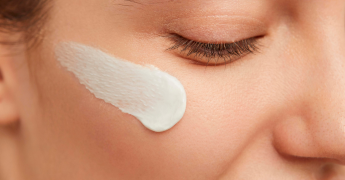
Tranexamic Acid (TXA) is a synthetic molecule with a structure similar to lysine, a naturally occurring amino acid. Lysine plays a crucial role in promoting collagen growth, providing the skin with strength and elasticity. TXA is commonly prescribed by doctors as a fibrinolytic agent, a drug that helps blood clot. It is used to reduce blood loss in situations such as major surgeries, trauma and postpartum bleeding.
TXA is also prescribed to individuals with heavy menstrual bleeding. Interestingly, a doctor discovered TXA’s potential to brighten the skin and reduce hyperpigmentation while treating chronic urticaria. This finding has led to TXA gaining prominence in skincare for its ability to improve skin appearance with fewer side effects compared to similar substances.
Tranexamic Acid in Skincare
Research suggests TXA may have a role in dermatology due to its anti-inflammatory and anti-melanin producing properties. When applied to the skin, TXA interferes with the pathway between skin cells (keratinocytes) and melanin-forming cells (melanocytes).
Essentially TXA modulates blood flow via VEGF-1 & Plasminogen receptors that interact with melanocytes. Pigment production is far more complex than addressing the pigment cell, as research has shown that many other factors contribute to pigmentation, including the interplay of blood vessels, epidermal cells, basement membrane factors, as well as fibroblasts. The science of TXA is the biggest breakthrough in the management of melasma of the past decade.
Benefits
- Reduces pigmentation and dark spots: A 2018 systematic review and meta-analysis showed that TXA is a promising treatment for melasma. A 2019 study found that 5% TXA is as effective as 3% hydroquinone, the gold standard for treating hyperpigmentation, with higher participant satisfaction.
- Fades sun spots: A 2021 study found that a topical derivative of TXA effectively improved overall skin tone, redness, inflammation, and dark spots in sun-damaged skin.
- Strengthens skin barrier: The outermost layer of the skin protects the body from germs and toxins, retains moisture, and prevents water loss. Improving the skin barrier could decrease symptoms of rosacea, and evidence suggests TXA accelerates skin barrier recovery.
- Reduces acne and acne-related discolorations: A 2022 review found TXA, along with specific topical and laser treatments, effective in fading post-inflammatory erythema. A 2022 study also noted that 10% TXA can effectively reduce acne inflammation and skin redness.
- Rapid Cold Sore Care: Incorporating TXA into cold sore treatment regimens represents a significant advancement in managing this prevalent viral infection. Cold sores, caused by the herpes simplex virus type 1 (HSV-1), are painful and often recur. TXA can aid in rapid cold sore care and provide more effective symptom relief compared to traditional treatments. This is particularly beneficial for those who experience frequent or severe outbreaks.
The Bottom Line
Tranexamic acid is a versatile ingredient offering numerous skin benefits, including fading dark spots, discolorations, and melasma, treating acne, and improving the skin barrier. It also shows promising results in managing cold sore symptoms by reducing healing time and providing quick & effective symptom relief. Its gentle yet effective approach makes it a valuable addition to skincare routines.
References
- “Efficacy and Safety of Tranexamic Acid in Melasma: A Meta-analysis and Systematic Review,” Acta Dermato-Venereologica (Medical Journals).
- “The antiplasmin drug tranexamic acid is effective against hemoptysis, epistaxis and melasma, as well as trauma and peripartum hemorrhage,” The BMJ (BMJ).
- “Clinical observation and dermoscopy evaluation of fractional CO2 laser combined with topical tranexamic acid in melasma treatments,” Journal of Cosmetic Dermatology (SpringerLink).
- “Efficacy and Safety of Tranexamic Acid in Melasma: A Meta-analysis and Systematic Review,” Acta Dermato-Venereologica (Medical Journals).



